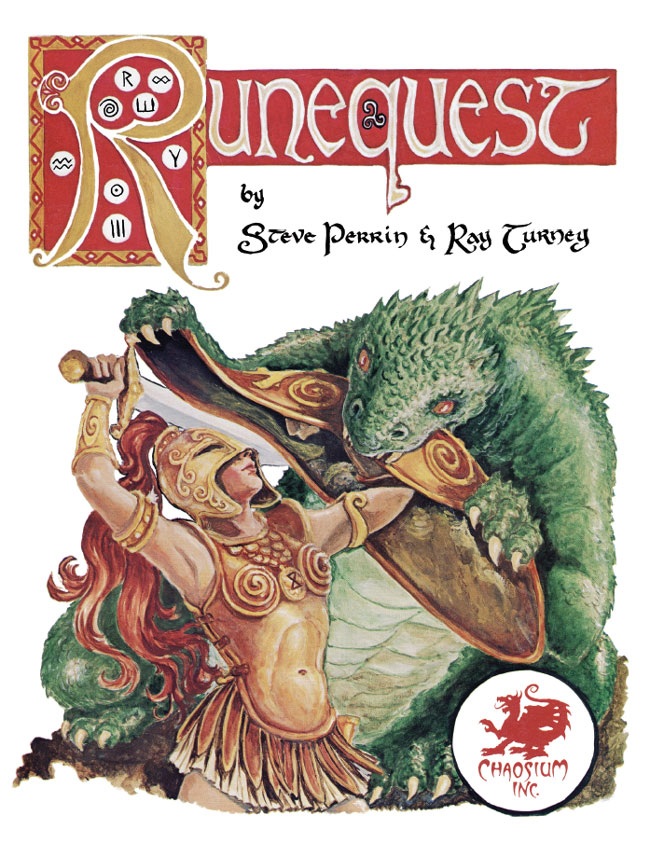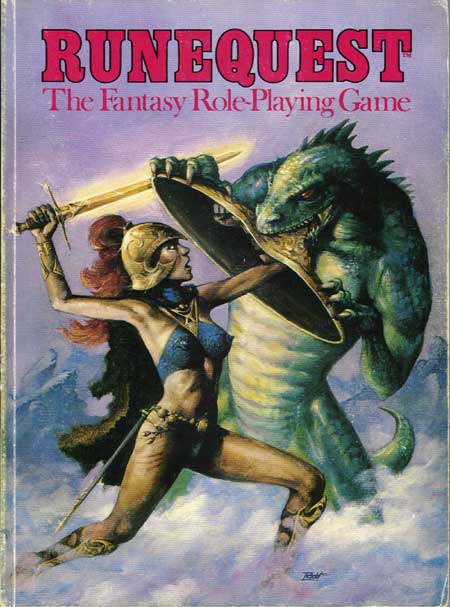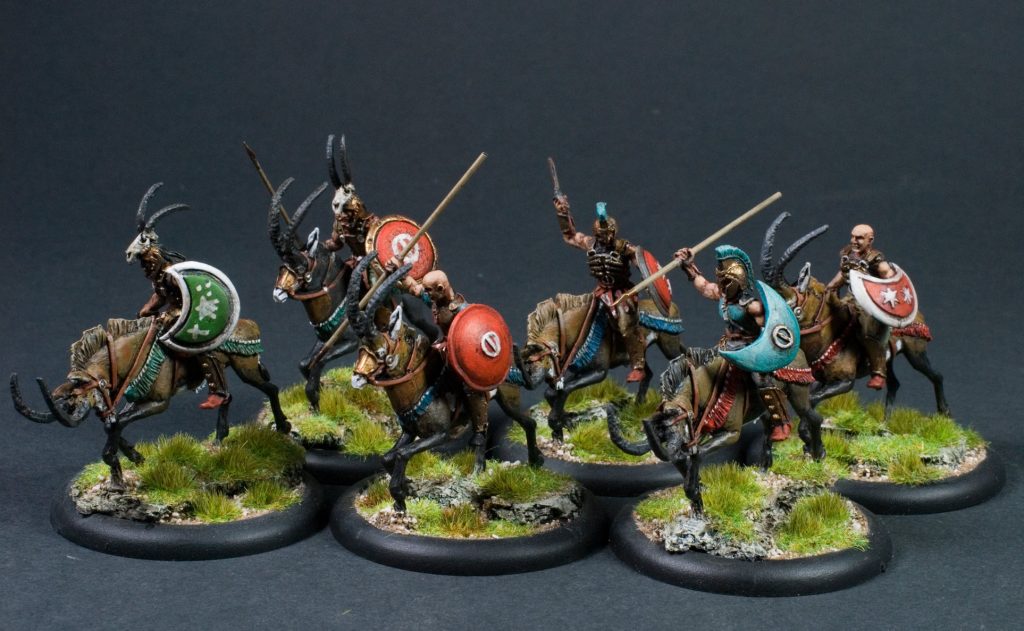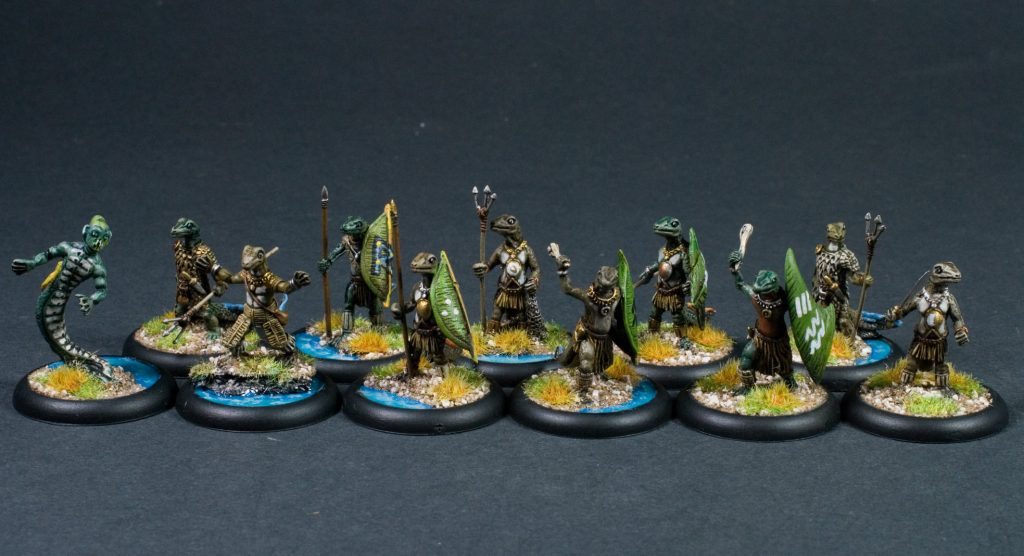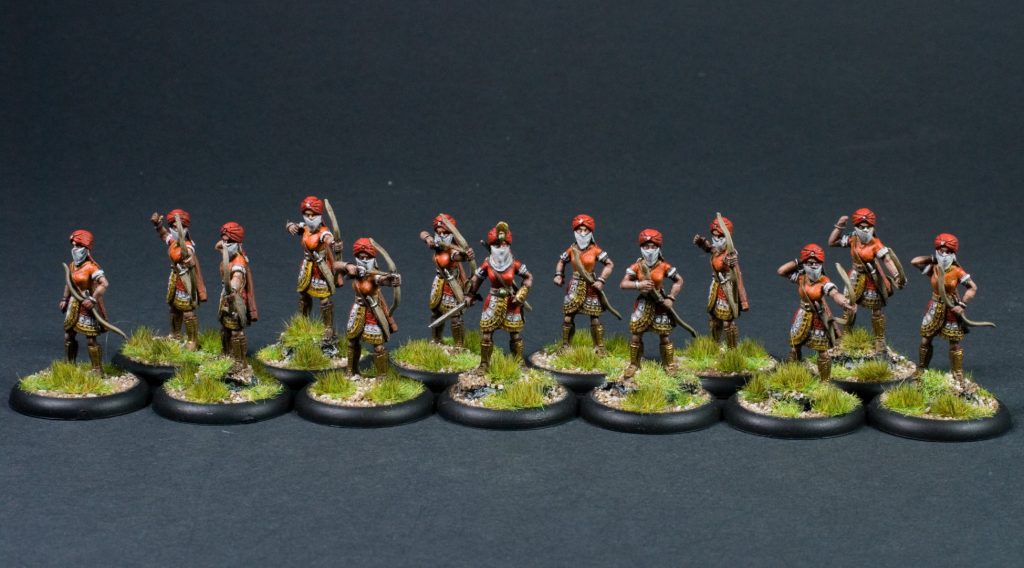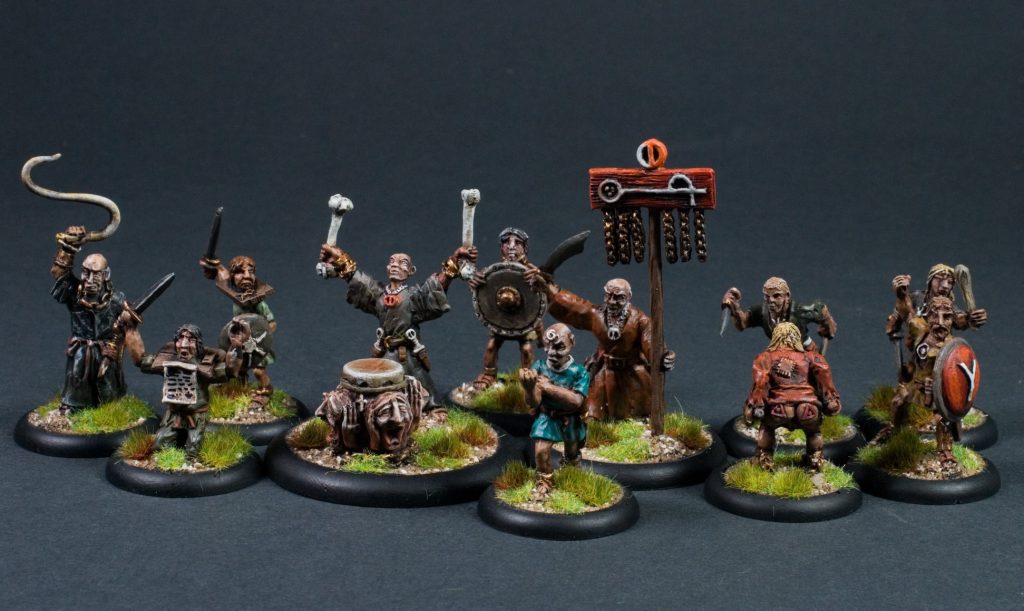Welcome to a new issue of the Journal of Runic Studies, the premier Malkioni publication for studies into the nature of Glorantha. If you haven’t subscribed yet, please consult with the spirit bound to the appropriate electronic page.
This is another late issue because not only was I pretty busy last week, but also… well, you’ll understand when you get to the Jeff’s Notes section.
Chaosium News

Here are this week’s Chaosium news!
RuneQuest Starter Stream Episode 6
The wonderful RuneQuest Starter Stream continues, as James leads his players through the final act of “A Fire in Darkness”, the second adventure of the boxed set. However, this is the final episode: they are not going to play through the Rainbow Mounds (the third adventure), or otherwise continue the campaign.
Pendragon Design Journal on the Battle System
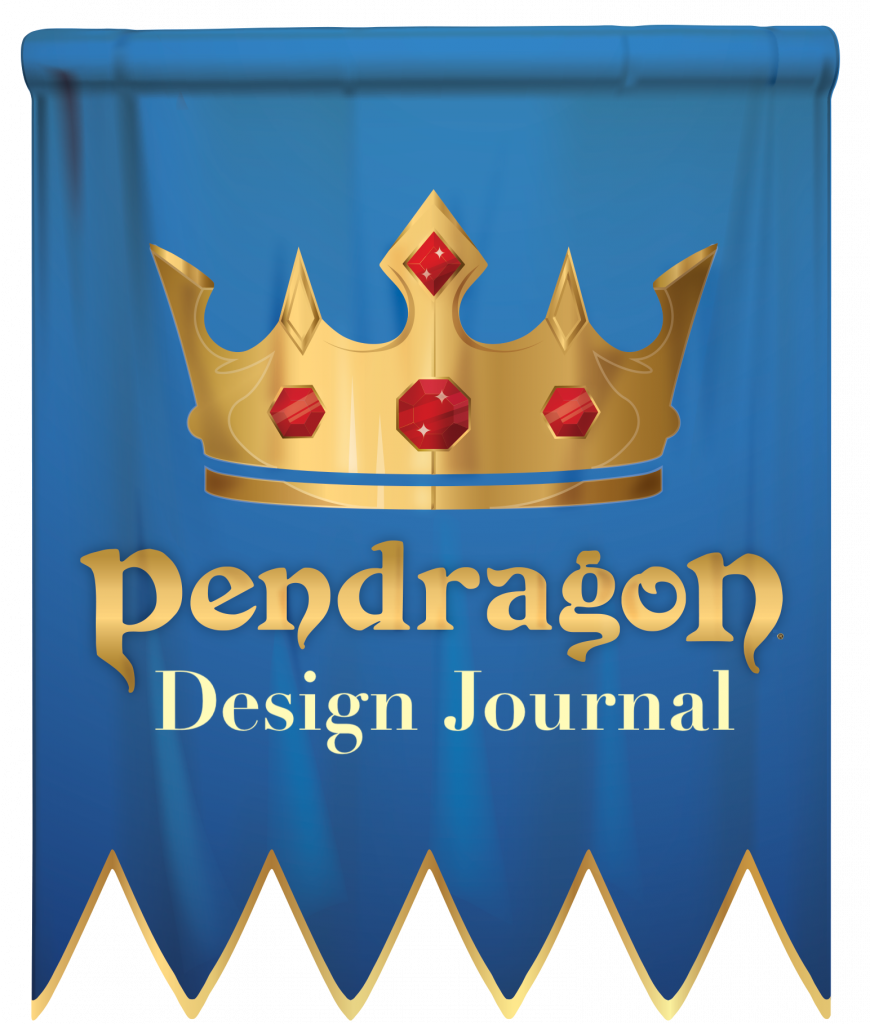
The 6th edition of Pendragon is just around the corner, and given the history of exchange of mechanics and ideas between it and RuneQuest, I found David Larkins’ latest “Design Journal” article interesting. It talks about the upcoming new mass battle rules. You might recognize a lot of stuff that was also mentioned about the upcoming mass battle rules for RuneQuest.
An early work-in-progress version of the battle rules was seen in Jeff’s house campaign with the Battle of Queens (and I annotated it heavily in issue #12 of the Journal). There’s a good chance the rules have been tweaked and improved since then, but you can refer to that video to see them in action.
Jonstown Compendium

The Jonstown Compendium is Chaosium’s community content program for all Gloranthan games, hosted on DriveThruRPG. Disclaimer: all the relevant links are affiliate links that hopefully will let us cover some of the hosting and maintenance costs for the website and podcast! Thanks for using them!
Bonus Content for Bad Day at Duck Rock
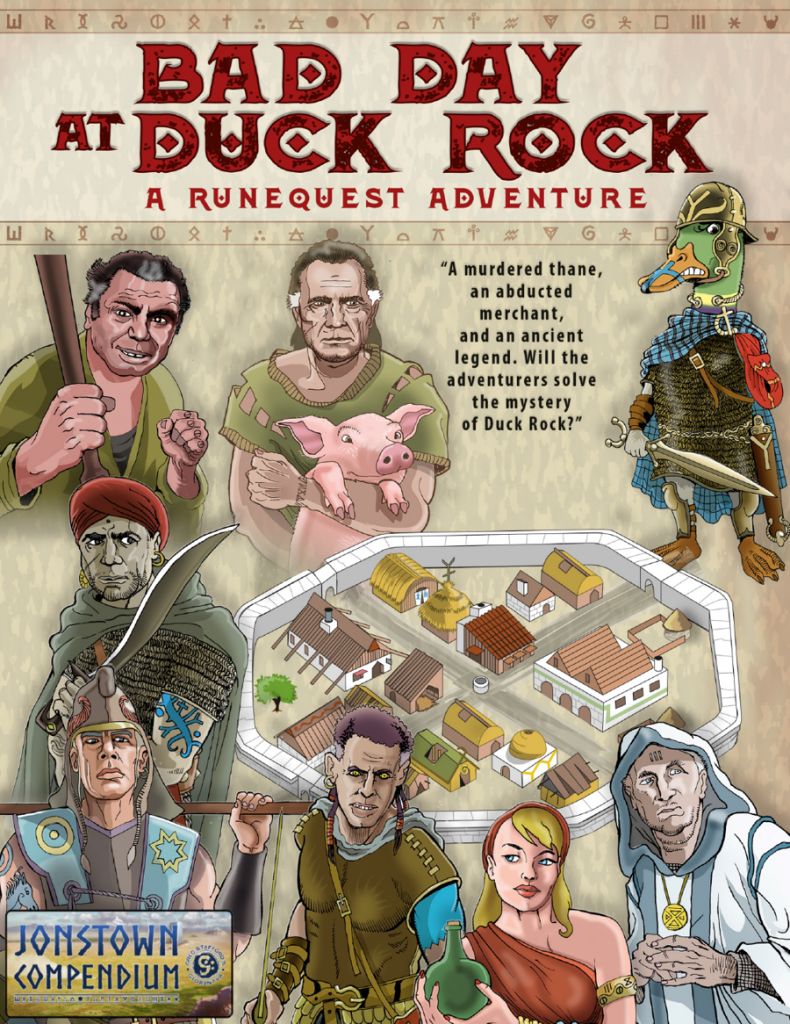
Peter Hart has updated Bad Day at Duck Rock with some bonus content featuring “Rill the Naiad”.
Some Art from the Periplus
Martin Helsdon’s next project is, I think, a Jonstown Compendium friendly version of his “Periplus of Central Genertela”, which lets the reader sail around the Holy Country and beyond. It looks like he’s investing in some high quality art! Here are two illustrations that will be in the book. The first one by Mark Smylie depicts Wolf Pirates, and the second by Katrin Dirim is an Esrolian mural of Nochet.

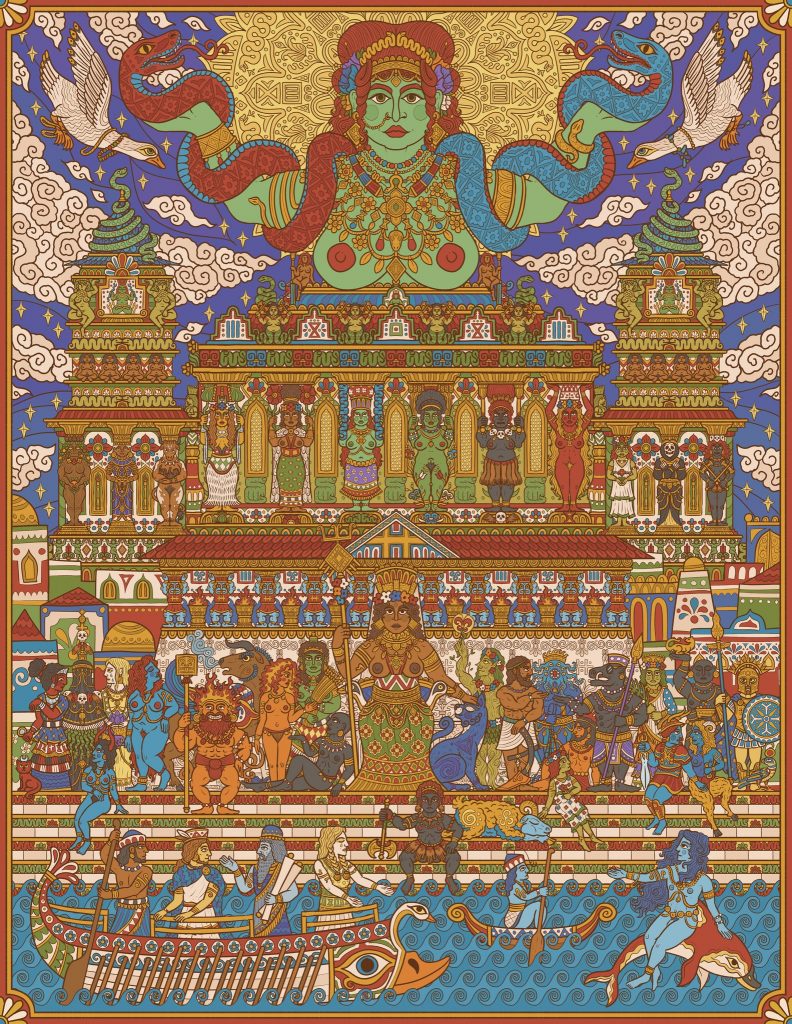
Jeff’s Notes

Jeff Richard, the current mastermind on everything Gloranthan at Chaosium, is often posting notes and thoughts on the RuneQuest Facebook group. Here’s our curated list from the past week. A partial archive of these sources is compiled on the Well of Daliath.
Modern Pavis
Jeff has some thoughts on Pavis circa 1625-1626, which is the Pavis of the new RuneQuest Glorantha product line:
As we all know, New Pavis now has a king – Argrath Whitebull – who is backed up by the White Bull cult, a new Pavis Royal Guard, and many Sartarite and Wolf Pirate adventurers and mercenaries. The new king’s main source of wealth is the treasure he took from the Lunars when he took the city from them (who in turn took much of it from the Rubble).
The previous RuneQuest and HeroQuest lines were set a few years before the Dragonrise, so all these books described a Lunar-occupied Pavis. If you’re lucky, maybe you played one of these “Sartarite adventurers and mercenaries” who helped liberate Pavis… and if you were really lucky, you played one of the Wolf Pirate ones!
Jeff also added in a comment that the Lunar treasury used to pay these mercenaries was probably sizable “given that it was hoarded by the impecunious Halcyon”.
Think of this as Samarkand or Balkh, with a ruler backed by the nomadic tribes. Of course this changes the nomadic dynamic as well – as New Pavis is now a source of prestige goods for the nomadic khans. Orlanth, Storm Bull, and Waha are in ascendancy as are the Bison and Impala Tribe, while the Sable Tribe have much to prove to the fellow nomads.
Samarkand is a city in modern-day Uzbekistan that dates back to the 8th century BCE. It got conquered and occupied multiple times during its long history — it became Greek when Alexander the Great sacked it, became Persian later, then ruled by nomadic tribes from Central Asia, some Islamic Caliphates, and even Genghis Khan’s Mongols.
Balkh is a city in modern-day Afghanistan that was settled sometime between the 21st and 16th century BCE (although this is apparently based on very recent archaeological discoveries… until then it was thought to have been settled in sometime between the 6th and 4th century BCE). It was sitting on the silk road so it might have been quite wealthy and very cosmopolitan. In fact, it’s considered to have been an important place for the development of religions like Buddhism and Zoroastrianism, or for the birth of some traditions like Nowruz, a sort of Persian New-Year celebration as far as I understand. It was no doubt equally important for sciences and philosophy. It’s interesting to consider where in Glorantha you would put a city where new philosophies and cults might evolve… anyway, just as with Samarkand, it was conquered and occupied multiple times, and by the same usual suspects in roughly the same order.
The reason the Sable Tribe has “much to prove” is of course because they had sided with the Lunars during their invasion and occupation of Prax.
The next generation will be an era of much change for the Praxians. Many Praxians will fight for the White Bull in Dragon Pass and Peloria, and many will never return to Prax. New cults appear, some old cults will decline (at least comparatively) and others will gain a new ascendancy. Praxian khans will serve as companions and advisors to an Orlanthi Prince, and the Lightbringers and the Praxians become associated to an extent not seen since the First Age.
Somewhat related: how does Argrath, a Sartarite kid who was captured and enslaved by Praxian nomads, manage to claim the throne of Pavis?
Argrath’s right to the title of “King” likely rests on –
Acclamation by the Orlanth cult as “Rex”;
Acknowledgement by the Pavis cult;
Descent from Sartar (and thus distant kinship with Dorasar)
And of course, by right of taking New Pavis from the Lunar Empire.
Note that Dorasar is the founder of Pavis, and a grandson of Sartar. That’s convenient, isn’t it, that you can claim both thrones in one go?
Argrath’s motivation for liberating Pavis is a combination of:
1. it was his home for many years and he has allies and friends there,
2. he needed to take Pavis to cement the support of the Praxian tribes,
3. He couldn’t leave a Lunar stronghold in his rear,
4. It makes a good springboard for Dragon Pass.
Dendara’s Cult
Jeff writes about Dendara, the “good wife of Yelm”, and a fairly common cult in Peloria and similar Solar-worshipping lands:
In history, Dendara’s cult has remained important as the primary Pelorian and Pentan women’s goddess. She was revered by the Suns of the Son and the Pure Horse People, and called La-ungariant, First Wife of the Imperial Sun and goddess of women. Hers was one of the Ten Priesthoods established in the First Age by the first Dara Happan emperors and one of the Twenty deities recognized by name in the Second Age. In the modern Lunar Empire, her cult upholds both old tradition and the new ways of the Red Goddess. As the cult teaches, “there is great value to some of the Old Ways, for some things never change, even in New Times.”
The “Ten Priesthoods” were Dayzatar, Antirius, Lodril, Dendara, Shargash, Polaris, Naveria, Oslira, Buserian, Lokarnos, and Ourania. A nice mix of every sort of deity you need to rule a nation. And of course, a patriarchal society like the Dara Happans are going to tell the Dendara-worshipping women to stay in their place and respect “tradition”, eh?
She was the La-ungariant described in the Grazers chapter of the Composite History of Dragon Pass. However the Feathered Horse Queen revealed that there is more to her than just that, and that La-ungariant is a title of the Earth Goddess of Ernaldela – Ernalda.
The “Composite History of Dragon Pass” refers to a chapter of King of Sartar, if you haven’t read this, err, let’s say “academic” book.
Glorantha has a long history of people “revealing” that this or that deity is really this other deity. Did anybody do that in their game, with player characters heroquesting into an established cult to “reveal” that it’s something bigger or different? This might be an interesting story arc for an epic campaign… mmmh.
This radically changed Grazer society, and is why they no longer really resemble the Pure Horse People of Pent (or of Second Age Prax).
We have discussed the Feathered Horse Queen’s influence upon the Pure Horse People in past issues of the Journal (issue 33 and issue 40, for instance). But at this point it gets a bit confusing. I think that the La-ungariant of the Grazers was thought to be Dendara, but really La-ungariant being just a title, it turns out it was Ernalda behind it? Or something? Because Dendara and Ernalda are not the same goddess. The God Learners thought they were, but both Ernalda and Dendara “stubbornly rejected that”.
The God Learners were convinced that Dendara and Ernalda were the same entity, and even managed to transpose worshipers with no ill effects. But they never succeeded in getting either goddess to admit identity with the other.
The “Goddess Switch”, as it’s called, was an experiment by the God Learners conducted in 849, where they indeed switched worships of Dendara and Ernalda around different parts of Maniria. I had indeed no ill effects at first… but after a three or four years things started going bad: numerous recent marriages disintegrated, crops failed, fruits stopped growing, and famine ensued.
But hey, this is science, people. You try stuff, and sometimes it works, and sometimes it doesn’t. The key is to gather more data points after that. Who wants to try and switch Humakt and Eurmal? I can almost guarantee they are the same.
The Three Types of Magic
Glorantha, and RuneQuest in particular, famously has three types of magic:
Arguably the oldest is Rune Magic, whereby mortals can wield the power of the gods. In most cosmologies, the gods created mortals to serve or aid them. Mortals were descended from the gods that created them (as a form of very weak srvuali and burtae) or who mated with their ancestors (think the Vingkotlings, descended from Orlanth and a mortal woman).
Oh my, look at these casually thrown around terms like “srvuali” and “burtae”. I have now idea what the hell that is, but I have seen them used before. One answer is in the Xeotam Dialogues, a sort of Socratic dialogue thing that also exists in Glorantha with the Malkioni. The Xeotam Dialogues are in the Glorantha Sourcebook, but you can also read them here.
It’s not super important here but the Srvuali are, I think, the gods that exist as a part of an original Elemental god. They are more specialized and have more personality than the “pure” entity that embodies an Element. Therefore, it seems like Malkioni wizards prefer to use these Srvuali because they’re easier to negotiate with or to bind, and more effective to use. The Burtae are entities that are offsprings of Elementals and/or Srvuali… but the Burtae can then also create other Srvuali so… I don’t know? Let’s just say these are the demeaning terms Malkioni wizards use to talk about gods and their offspring.
Rune Magic requires a link between the god and mortal, where the mortal can draw upon the God Time power of the god. Initially this was easy – Orlanth was your great-grandfather and could show you how. But with the Greater Darkness and the coming of Time, that link requires initiation into the secrets of the god. And this initiation requires others to pass on those secrets and initiate new generations. It also requires sacrifice to maintain that link – sacrifice of magic points, food, and other treasures – as well as specialists supported by the rest of the community. Rune cults require community surplus, and thus tends to require settled agrarian or pastoral societies.
Next, spirit magic:
Spirit magic is perhaps inevitable in a world where spirits are everywhere. Although most shamans are trained through an apprentice-master system, others are self-initiated. Spirit magic is ubiquitous in Glorantha – taught by shamans, Rune cults, and long-lasting spirit cults. It is the magic of everyone, and the easiest to gain access to. But it is ultimately less powerful than Rune magic, and many times we have seen the progression from shaman to spirit cult to Rune cult in Gloranthan history.
Unlike Rune magic, spirit magic doesn’t require much of a social or economic infrastructure beyond a shaman. Hunter-gather bands, or other bands can have extensive access to spirit magic comparable to that of larger settled or pastoral societies.
I guess this is how, in RuneQuest, some powerful spirit societies actually provide a Rune spell or two, as opposed to just access to spirit magic.
As far as I can tell, sometimes it’s because the spirit being worshipped is powerful enough to be considered a minor deity, but other times I think it could be because a widespread type of spirit is being collectively worshipped in many places under a sort of “archetypal spirit figure”. This is the case with, say, river horses, who are water elementals associated with an archetypal River Horse entity who jumped around the world during the Great Darkness to escape Chaos monsters (it’s all explained in the Glorantha Bestiary by the way). This River Horse (capital R and capital H) might have existed, and might be the ancestor of all river horse elementals, but frankly it might have not “really” existed (for whatever that’s worth when you talk about the God Time) and it’s just an aggregation of all river horse stories. Maybe someone should do some heroquesting experiments… just saying… it’s for science, people!
Finally there is sorcery. Sorcery is intellectual and rational – a materialist approach to command the magic of Glorantha through mortal will alone. It can be as powerful as Rune magic, although it is certainly not as easy or quick to cast – but makes up for that with its range of possibilities.
Sorcery is more “expensive” than Rune magic, requiring a many years of dedicated study by specialists in order to learn. Most sorcery-using societies are built around the rest of society developing and supporting these specialists. Literacy or very long lives are needed to teach new specialists, and nearly all sorcerous societies are settled, literate, and urban.
Jeff then adds a few additional notes. For instance, the reason why RuneQuest has some mechanics to have spirit magic and sorcery mutually exclusive:
One other thing – the mental approach involved in spirit magic is antithetical towards the materialist will to power involved in sorcery. Sorcerers tend to eschew spirit magic and treat it as beneath notice.
So when we think of the personal risks associated with magic, spirit magic poses the least personal risk. The spirit rarely ask much from those they aid, other than to be treated with respect and given sufficient mana to work with.
Rune magic allows the user to wield the power of a god, and there lies the danger. The initiate must maintain the link between mortal and god, and thereby becomes the gods agent in Time. Generally we initiate to gods that we find useful and benevolent, but on a macro-scale this continues the conflicts of the Gods War in the world of Time. And the gods often make demands on their followers that can restrict actions and compel behaviour in order to maintain that link.
Sorcery poses the opposite danger. Sorcerers are subject to only their will and imagination. Their schools may teach otherwise, and many societies have means of coercion to keep sorcerers in line (indeed this is core to Rokarism), but the God Learners showed us the dangers of sorcerous hubris.
Let’s now go back to spirit magic.
One thing I’m really sad about with the RuneQuest core rulebook is that it doesn’t quite explain what spirit magic is really. When I first read it, I was wondering what it means to “learn” and “forget” a spell, and why CHA is the limiting factor (instead of POW or INT for instance).
As far as I can tell, spirit magic basically involves merging spirits into yourself. These spirits are extremely basic, and serve one function. Some might help you make your blade better (Bladesharp) while some help mend wounds (Heal). But you “wear” those spirits the way you wear a belt with sharpening tools and a first aid kit. It’s like allied or bound spirits, only they’re totally dumb and only do one thing. That’s why CHA is the limiting factor: you still need your tools to like you enough to stay. This is consistent with CHA being the limit for your bound spirits.
There are countless spirits beyond those described in the Bestiary. Spirits are EVERYWHERE in Glorantha. Every stone, every leaf, every plant, every insect has spirit and potentially “personhood”. It is perhaps easiest to think of it as the caster simply awakens the spirit of the thing and has it do its thing and then it becomes quiescent again.
It is meaningless to treat these momentary manifestations of personhood as something with POW or CHA. They are just moments that the localized Life Force of Glorantha is awakened to cause an effect. This is why spirit casters need that focus – it helps them awaken the spirit to do its deed and then become quiescent again.
That’s how Greg described it to me and is the approach I took in RQG. But given that there are many paths to animism, I don’t think too much description is useful.
And that in a nutshell is also why animist spirit magic and materialist sorcery end up being mutually incompatible ways of thinking about the world.
Notes About Esrolia
Oooh boy, as if last week’s Glorantha Art series wasn’t enough, Jeff is doing a four part series on Esrolia (part 1, part 2, part 3, and part 4).
Ernaldela
When we think of Esrolia, we need to remember that unlike Sartar or even Pavis, it is an ancient land. Esrolia has a consistent history of being a settled and civilized land that goes before Dawn. Its ancient mundane history is almost pointless, likely just a few story cycles between Ernaldela and the Silver Age Heroes.
Ernaldela – that’s our real point of origin. Ernaldela is the home of the Earth Goddesses. It is a garden, populated by friendly reptiles and mammals, nymphs and dryads. Think yakshini beneath flowering trees.
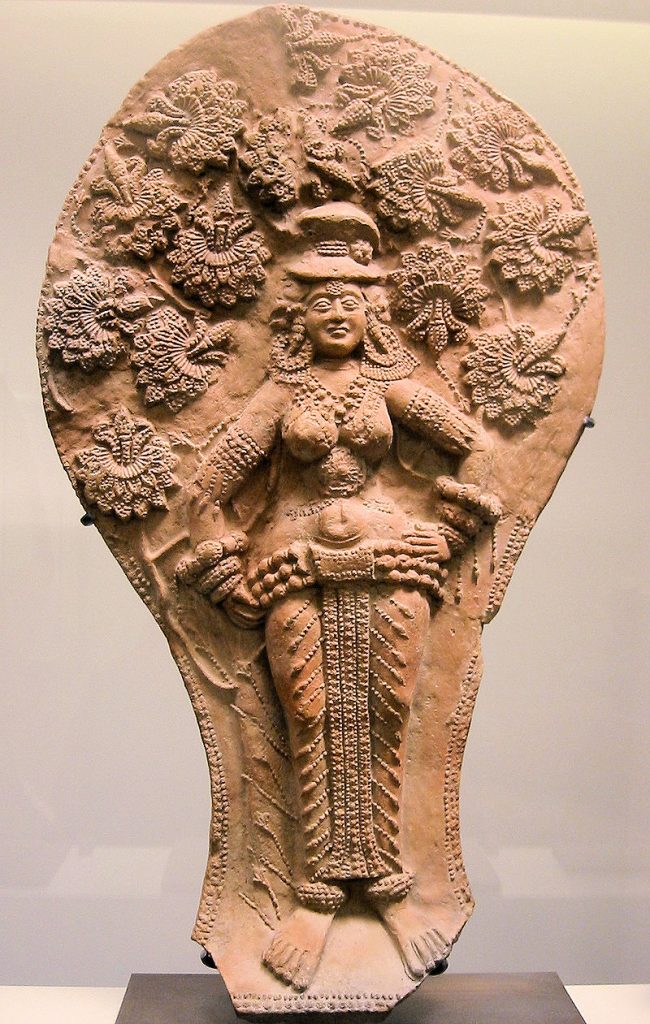
That picture is indeed a Yakshi under some flowering asoka tree. The Yakshini are a family of nature spirits in mainstream Asian religions.
I often wondered why Esrolia is so big on Earth deities in general, when it’s supposedly the land of Esrola specifically, but I guess it makes sense if that was all the Earth deities’ home and she just inherited it at some point in the God Time.
On the Hero Plane, Nochet roughly corresponds to the location of the Earth Lady – the residence of the Earth Queen. Ezel strongly corresponds to the Womb of Gata – which is the source of Life. The Hearth (another location in mythic Ernaldela) corresponds to anything specific or it exists simultaneously at every sacred hearth fire. Flamal the Lord of Trees is not far away, and is associated with the Old Woods. There are plenty of other correspondences as well, but what really matters is that if we pierce the mundane veil in Esrolia we can see Ernaldela. Don’t worry or bother trying to name all the nymphs, dryads, and other godlings of Earth+Life+something else that reside here. What matters is that they are here and numerous.
This is nice information for world-building in Esrolia, as it gives us some basic “theme” for a few places around the area. In particular, Ezel as the womb gives a whole new picture of the great temple there where, supposedly, Ten Thousand Goddesses are actively worshipped. That’s a lot of eggs in Gata’s womb… although not as much as some ocean goddess, maybe.
So even though Esrolia is densely populated, it is not unusual for a dryad (without elves usually) to live in a grove near a village or town. Think like the sacred groves in India – small little enclaves of woods and flowers that are untouched by the local farmers, where logging and hunting are taboo. The villagers know her, offer her gifts and keep her happy so she might bless the fields or orchards. Other nymphs are the guardians of the treasures hidden in the earth, and so on. It is perhaps worthwhile to consult the list of thirty six yakshinis given in the Uddamareshvara Tantra for ideas about the various local nymphs and dryads in Esroia […]
I’m not going to copy the entire list of 36 Yakshini but you can read it here. Incidentally, this is a great list to get ideas for nature spirits in your game!
We obviously don’t use these names, but the titles give you an idea what they might be. Obviously many are very sex and pleasure oriented – these are fertility deities after all! Others are flowers, but some are skulls, and some are even terrifying – perhaps a “nymph” of the Gors!
I’m not sure what the “Gors” refers to here. It might refer to the Gors of Maran and Babeester? Or it’s the Welsh for a marsh or a bog, a term that John Hughes uses a lot in his description of the Far Place lands?
The Jolly Fat Man might appear at feasts and celebrations to bring intoxication to all. After all, wine, beer, and mead are all children of Ernalda and the Flowing Waters, or Ernalda and Flamal (in the case of wine). This proximity between Esrolia and Ernaldela has always been present, but it is nearer thanks to Belintar and the Tournament of the Masters of Luck and Death. The Hero Plane is easy to access throughout the Holy Country – hence the annual pilgrimage of the Dead from Necropolis to Nochet.
We reported previously (in issue #30 among others) how the Tournament of the Masters of Luck and Death helped maintain a thing called a Proximate Holy Realm around the Holy Country, which made it easier to heroquest.
And so Ernaldela is the mythic realm just on the other side of Esrolia, and easiest to access from there. Many of the early stories in the Entekosiad can also found there, but deeper, broader, and with more paths. The Earth goddesses are a substrata throughout much of Gloranthan myth, but in Esrolia they remained visible and powerful enough for the husband-protectors to acknowledge their sovereignty (in contrast with the Pelandan Brightface story, the Esrolians have Orlanth’s murder of Yelm as the goddess-willed response to Brightface’s attempted usurpation of the goddesses’ rights).
I think Brightface is some other name for Yelm, or other manifestation of the Sun in God Time myths… I don’t know, I haven’t read the Entekiosad! But hey, we get the general idea.
Silver Age Heroes
This section is pretty long but at least (thankfully) pretty self-explanatory even for Glorantha newbies. Plus, I don’t have much time left to annotate anyway…
During the Lesser Darkness, Ernaldela was ruled by a tribe of Air demigods (the Vingkotlings), who protected the goddesses of the land but also fought with trolls, sky people, dwarves, elves, and of course each other. Their rule was inherently unstable and when the Vingkotlings fought their own Mahabharata, the royal line was wiped out. And so the Esrolian Grandmothers seized power for their own protection and established the earliest framework of Esrolian society – rule by the priestesses of the Earth cults.
However, the Grandmothers enabled survival, not recovery. Recovery came from the Silver Age heroes.
The Silver Age heroes straddle the period between the Greater Darkness and the Dawn and helped knit the world back together. The most widely recognized Silver Age heroes include: Queen Merngala of Nochet, who was called daughter of Ernalda; King Heort, who fought the Unity Battle and founded the Heortling peoples; Vogarth, who was often called simply the Strong Man; Kalops the Sacrificial King; Tessele the True, who relit the fires that warm the earth; Aram ya-Udram, who conquered the pig demon, Gouger; Panaxles the Builder, credited with many of the ancient structures; and Sestarto the Artist, who first depicted the gods in sculpture and painting.
The Silver Age heroes are known throughout Dragon Pass and the Holy Country. Every Sartarite knows their stories, just as every Esrolian does. But they are perhaps more important to the identity of the Esrolians.
NOTE: few if any of these Silver Age heroes have independent cults. Their worship has long since been incorporated into larger cults, such as Ernalda, Orlanth, or Caladra and Aurelion.
There are only a couple names I know from that list of heroes but Jeff describes them below in more detail than what you can find in, say, the Glorantha Sourcebook. This is good stuff, again, for world-building and campaign development. Note that the description below is from a Third Age perspective:
Merngala the Great Queen
The greatest queen of Esrolia, Queen Merngala was the daughter of Esrola. She wielded awesome Earth powers, gained when her goddess mother retired to the Land of Sleep. Her main residence was a palace on Lake Bakan where her army guarded the bodies of the dead. The site is now simply called the Necropolis. With the Dawn, Merngala invited the Lightbringers back to Nochet.
Merngala was a mighty priestess with many husbands and is the model to which all Esrolian queens are compared. Some husbands were rivals for her at times, even murdering each other, as Heort did to Panaxles, or were boon companions, as were Aram ya-Udram and Vathmai Entrulsson. Even the Only Old One was her husband. She had Panaxles and the Strong Man build the great walls around Nochet and invited the Waertagi to set up piers for the dragonships. Merngala had Sestarto decorate the city and temples with countless sculptures inhabited by the gods. She allied with King Heort but did not join his kingdom. Merngala is worshiped as the founder goddess of Nochet.
The Necropolis is an important site in Esrolia. There’s even a special holy day where the dead go on a procession from there to Nochet, and I’m sure it’s scary and awesome.
Heort
Founder of the Heortling people, Heort was born in the Greater Darkness and spent his youth in hiding as the forces of Chaos destroyed the world. When all the world was gone, and every man was alone, Heort went out upon the world. There, at the edge of the world, he met with the Second Son, who told him of his great and terrible battle. The Second Son showed Heort his wounds, and the secret of the Star Heart, and told him the secrets of the I Fought We Won Battle.
Heort remembered that fight and went on past the Second Son, to the edge of the world. There he met the evil of his world and won. He made his way to Dragon Pass where he found others to resist the encroaching Chaos, and he made friends to fight the Unity Battle. King Heort supported the Only Old One to create the Unity Council.
Heort was one of the husbands of Queen Merngala, a bountiful woman of great fame, who is elsewhere recorded as the object of many Silver Age rivals. Another famous wife was Ivarne, who founded several dynasties in Dragon Pass. Heort fought several famous battles and duels.
At the Dawn, King Heort reestablished worship of Orlanth and the Lightbringers throughout his lands. When he died, Heort was burned sitting upright upon his throne, atop a colossal bier surrounded by his treasures. A huge wind rose and carried all away in a maelstrom of fire. Afterwards, people everywhere in his land worshiped him.
The whole thing about meeting the Second Son and learning the secrets of the I Fought We Won Battle is the core of some of the most common Orlanthi adulthood initiation rites. This is described by Greg Stafford here.
Vogarth
Vogarth was the Strong Man. He was huge, powerful, and generally kind, but he was noted for his dull mind as well as his great power; he was the strongest man in the world.
He did many great deeds. The Strong Man was always ready to engage in challenges of strength. A huge stone giant once came and threatened the Only Old One, who called for Vogarth’s help. He came running and cracked the stone giant with his hammer and saved the Only Old One. He threw a dragonship onto the Palace of Black Glass, and the trolls ate the Waertagi. Another time he challenged Jeri Babo, called the Immovable Person, and pushed him off his chosen place. Another time, he carried the wondrous Living Stone Tree from the Footprint to Queen Merngala’s palace. She took him as her husband for a while and had him build the walls around her city.
Kalops
Kalops was the Sacrificial King. He gave his very life to animate the Victory Spirit that inspired the troops at the Battle of Henerel, where the dog men were defeated and destroyed to the last creature.
Tessele the True
Tessele, a mortal child of Aurelion, was one of the first Twin Priests. When her Soul-Sibling was trapped and sacrificed by the Priests of Thed, her subsequent quest for vengeance made her the first hero of the cult.
In those troubled God Times, Tessele set off on impossible tasks that she performed through the efforts of miracles and willpower, eventually even succeeding in reconstructing and resurrecting her lost partner.
Aram ya-Udram
Aram ya-Udram was a great hero in the early Dawn Age. Aram was a civilized statesman, experienced general, and a religious leader of the Orlanth Adventurous cult. His most famous deed was defeating Gouger the God-Child, a divine boar. He took Gouger’s great tusks and made the Ivory Plinth, gaining control over the wild boars of the region.
Aram ya-Udram was a great friend of King Heort, and one of the husbands of Queen Merngala, but his boon companion was Vathmai Entrulsson. Together, Aram ya-Udram and Vathmai defeated the Pralori, and Vathmai founded the first ruling dynasty of Slontos.
At the Dawn, Aram ya-Udram was chosen to represent humanity on the World Council of Friends. Aram ya-Udram lived over two hundred years. When he died in 178 S.T., he was burnt at the Ivory Plinth, finally retiring to the Other Side. Aram ya-Udram had always worn a necklace of diamonds, which he named Uleria’s Necklace. At his funeral, the Goddess appeared and proclaimed a contest to win it. The winner of this contest was chosen to speak for humanity on the World Council of Friends, although the custom ended soon after when the council became the High Council of Genertela.
Of course, Aram ya-Udram’s legacy was tarnished, to say the least… his people at the Ivory Plinth later became the twisted and ugly Tusk Riders.
Panaxles the Architect
Panaxles was descended from the Stone-Souled builders and was thus related to the dwarfs. His mothers were the Tilntae, who were prevalent and important in the early ages of the world. Panaxles lived atop the slopes of the Spike before the Great Darkness. When the Spike was destroyed by Chaos, Panaxles managed to land in the place known as the Broken Arms. He was captured by trolls and made for them the Shadow Plateau to protect their Palace of Black Glass as a fortress against Chaos. The Only Old One set Panaxles free, who then wandered throughout Kethaela during the Silver Age.
Panaxles was the great builder of the period. He built the oldest sections of the temple at Ezel; the walls of Nochet; the palace of Queen Merngala; Whitewall; and many other famous buildings. Panaxles became a rival of King Heort over the affections of Queen Merngala and built for her the great sewers that drain the city of Nochet. It is said that King Heort met Panaxles upon the day the sewers were completed and the first waters rushed through it. Panaxles mentioned his contentment with his creation; Heort agreed, yet added, “It is a shame it is so ugly.” Thus began one of the most famous feuds of the Silver Age.
Sestarto the Artist
Sestarto the Artist shaped the landscape to create Ageless Beauty. He made the Farfalls, the Needle, and the sculptures that populate Ezel and the temples of Nochet. His sculptures became more and more realistic as he worked. Once, he made a sculpture in human shape. That was Ahrela, the Most Wanted, the Desired. The statue is still worshiped as an incarnation of Uleria, for everyone who sees it is seduced by it.
Remember that these heroes mostly existed before Time, so their stories can have multiple versions:
The Silver Age heroes are the great mythical figures of song and story. Everyone has stories about Queen Merngala and her many husbands – some are always mentioned (like Heort), but others appear in just one story. The Silver Age cycles contradict each other in chronology – and there are likely many different Lhankor Mhy attempts to put them in order, but new stories are continually told, and each true. Their deeds are in the God Time, not mundane Time.
The Shadowlands
Shadowlands – the Only Old One was the son of Argan Argar and Esrola, born in the Lesser Darkness. Argan Argar, a powerful Darkness deity and one of the commanders of the forces of Darkness on the Surface World, set up a camp atop Esrola, and the goddess went to him to plead mercy. Argan Argar told her to stand proud, for he would rather have her friendship than her fear. He became her lover and protector, and their child was the Only Old One, who was made king of the land.
The “camp atop Esrola” is the Shadow Plateau, which you can easily spot on a map of Dragon Pass.
Lodril was a spiteful and powerful god, and he attacked this place of darkness, but he was captured and subdued by Argan Argar and forced to work for that god of night. Lodril was forced to build the great Palace of Black Glass, wherein lived the Only Old One and his minions. It was a huge metropolis with tall slender spirals rising over spiked turrets of sharp obsidian. Its basement reached the Underworld, and its tallest tower reached to the sky’s zenith until it was broken by the Sun in the Dawning.
For millennia, Esrolia was protected by the Only Old One. Now the Only Old One was both benevolent AND malevolent. He was a troll after all (or was he?). He strictly followed his bargains, but the terms of those bargains could be cruel and merciless. The Only Old One endured for over a thousand years. He was the offspring of Argan Argar and Esrola, but also in some means a mortal or demigod rather than a full god subject to the constraints of the Compromise. He regularly acted in Time, but is thought to have had several incarnations. He definitely did not require something like the Tournament – instead it would appear that his connection to the divine realm was his Palace of Black Glass (aka the Palace of Night) that enabled him to directly access the Underworld.
The Only Old One’s influence can still be seen in Esrolia: There are still places of shadow and darkness (the Necropolis is perhaps the most important, but there are many others). Many secrets are kept in the shadows – for example Lanbril lurks in the shadows. Yelmalio (by whatever name we call him) is a much smaller cult in Esrolia than in other Orlanthi lands.
Argan Argar is a powerful and fearsome deity, capable of defeating Lodril and forcing him to make the Palace of Night. Argan Argar is still one of the most important cults in Esrolia – think of him like a fearsome asura who is nonetheless worshiped because he is the husband of Esrola (who is just a guise of Ernalda after all).
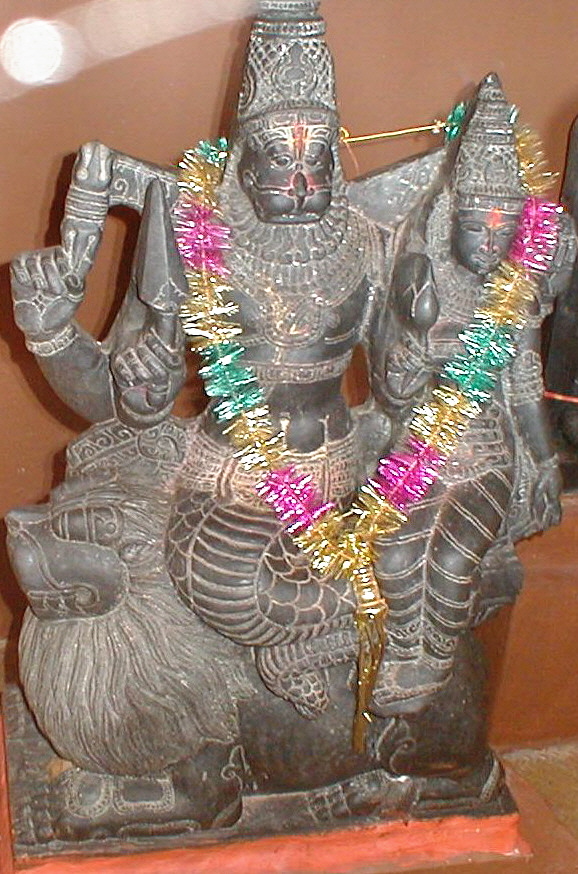
The picture here is one of Rahu, a shadow deity associated with a major celestial body in Hinduism. He’s depicted here with his wife Karali who I think (but hey don’t quote me on this) is the destructive aspect of Durga, the mother goddess. Who is also maybe an aspect of Mahadevi depending on how you go about it. I don’t know. It’s aspects all the way down. Hinduism is complicated, and it’s Monday. But hey, at least you have some starting point to do your own research now.
The Shadowlands era casts a long shadow (ha ha!) over modern Esrolia. It is an era with both benevolence and cruelty. It is not just (as Belintar is), but it is pragmatic and bargained for. An Equal Exchange – I feed you so that you do not feed upon me. But in return, you agree to protect me. Of course, if I do not feed you, then not only do you not protect me, but you likely feed upon me.
This affects how the Esrolians view the Darkness. Not as evil or a source of fear, but as something dangerous that can be bargained with.
One way of thinking about the Only Old One is like how the Ozians viewed the Terrible Wizard of Oz. He was a fearsome and dangerous being, who also could give good advice and generally kept the peace. But don’t bother him with trivial disputes or treat him with disrespect lest he devour you!
I did not have “Wizard of Oz” on my Gloranthan bingo card.
The fabled pragmatism of the Esrolians perhaps comes from this. The Only Old One is an ally because 1. he is useful, 2. he is too powerful to afford as an enemy, and 3. his demands are affordable. This is not an ideological alliance – that’s not really the Esrolian way. It is pure pragmatism.
And of course, Belintar made a much better offer as we will see soon.
It is worth keeping in mind that the Shadowlands were darkest in the Dawn Age, interrupted by the Broken Council for a generation, and then the shadows grew again throughout the Second Age. But never quite so dark, as the dragons pierced the Only Old One’s darkness from time to time. But the shadow was not lifted over Esrolia until 1318.
In all of Esrolia, there are some 70k Argan Argar cultists! A huge number – and it is the third largest cult in Esrolia (but dwarfed by number one and number two – Ernalda and Orlanth). The cult of the Lord of the Night is powerful, and we can imagine all sorts of nocturnal rituals in Nochet!
The Holy Country
Okay now we’re up to the time of Belintar the God-King:
For the last three centuries, Esrolia has been ruled by the God-King. Now I have written a ton about Belintar and the Masters of Luck and Death, but the short version is that Belintar and the Tournament of the Masters of Luck and Death keep Esrolia (and the rest of the Holy Country) in close proximity to the Hero Plane. So we get to regularly interact with Ernaldela, instead of having to go through the collected stories of generations of interlocutors. This also means that all the stuff in Land of 10,000 Goddesses is less important to us now. Roughly every generation we all get to experience Ernaldela, and some of us even wander through it. Of course this works both ways, and it is not uncommon for nymphs, dryads, and other magical beings to wander through the “mundane” Holy Country, experiencing that world.
Jeff indeed talked about Belintar in the past, and we’ve covered that for instance in issue #34, where I also explained what the “Sixths” (see below) are, with a nice helpful map.
The mention to “Land of 10,000 Goddesses” is about this Stafford Library book. Reminder: the Stafford Library is a bunch of random notes from Greg and it best used for picking crazy ideas and cool-sounding names, rather than used as “canon material”.
The Sixths of the Holy Country correspond to the Six Realms of the Hero Plane. Esrolia is self-consciously the realm of Earth, just as Heortland is self-consciously the realm of Air. The Tournament of the Masters of Luck and Death brings a regular infusion of comparative perspective into our mythic understanding. Earth regularly interacts with Air, Water, Fire, Darkness, and (emptiness). All of these realms work together to collectively form a whole – the Holy Country is the great cosmic dance of the elements.
In Belintar’s Holy Country, most places governed themselves, but were blessed by and disputes were resolved by Belintar. Belintar aided the Opening, showed the Magic Roads that allow people to travel through the Holy Country via the Hero Plane, and created the Fish Roads. Belintar rarely got directly involved in governing the mundane affairs of the peoples of the Holy Country. Each of the Sixths more or less followed their traditional ways – of course those traditions were changed by the very presence and role of Belintar. When a cult’s leaders might refuse to accept Belintar or reject his advice, Belintar was known to bring the cult’s own god into the discussion! But Belintar’s demands were few and always reasonable, and it was usually quite easy for cults and tribes to accept what he had to say.
Fish Roads are fun: they were magical roads that connected several landmarks of the Holy Country’s shoreline together, joining up at the City of Wonders. On Fish Roads, both land walkers and water dwellers could travel, so you could walk over the Mirrorsea Bay and cross paths with underwater beings merrily swimming alongside.
As a result, what never really developed around Belintar was the sort of court administration as you see in Glamour. Instead, Belintar surrounded himself with philosophers, mystics, magical individuals, adventurers, and vacationing gods.
So in Esrolia, the Earth Temples remain the owners of land, and were the sources of fertility and blessing. The Earth Priestesses are priest-queens, with the high priestesses having paramount authority. They have their associated cults – Orlanth, Esrola, Babeester Gor, Chalana Arroy, Lodril, Magasta, Flamal, Maran Gor, Voria, Asrelia. Ty Kora Tek, and Argan Argar (and others), all of whom are sworn to support or protect the Goddess. There is no specialized subcult of rulership – this is just social organization by the Earth Temple.
There are also plenty of important cults that are outside that Earth Goddess-centered system – Dormal, Issaries, Lhankor Mhy, Humakt, etc, and the Earth priestesses have to negotiate their relationship (although Ernalda’s ties to Orlanth helps with many of these cults). But power needs to be used with more subtlety in Esrolia than in Sartar – even the Queen of Nochet has less direct authority than a standard tribal king, let alone the Prince of Sartar.
About recent politics in Nochet:
For the last century or so, the Queendom of Esrolia has been held by the Queen of Nochet, and a descendent of Queen Bruvala. Bruvala married 15 men and at one time maintained 5 husbands. She had 23 children, of which 8 were daughters and fifteen were males, including three future queens and one winner of the Tournament of the Masters of Luck and Death. That son forced her to retire in 1510, but she continued to dominate Esrolian politics for an other generation in retirement as the “Reverend Grandmother.”
The role of the Reverend Grandmother was something like the Fujiwara kampaku in the Heian period. The titular queen would be trapped in ceremony, marriages, and fertility rites, while the grandmother would actually run mundane affairs, the treasury, make deals, etc. However, the most recent two queens (Hendira and Samastina) have ruled without Reverend Grandmothers.
The Esrolian Queens list in the Glorantha Sourcebook is a fascinating document and provides tantalising hints into the power struggles within that sacred dynasty.
The Queens List is also available on the Well of Daliath.
Now there is an interesting parallel of the Reverend Grandmothers with the Tharkalists, that group of daughter-lovers around the Red Emperor, who some claim are the real rulers of the Lunar Empire. However, the parallel is limited – all Reverend Grandmothers served as Queen of Esrolia, while obviously none of the Tharkalists were ever Red Emperor.
Community Roundup
The community roundup is our highlight of interesting things being mentioned in the Glorantha-related Facebook groups, sub-Reddits, and other similar online places.
Exploring Glorantha: The Mostali
JM and Evan continue their explorations by taking a look at the Mostali, the weird dwarves of Glorantha.
Snakepipe Hollow Walkthrough
D R has a new video up with more real-time 3D featuring Gloranthan caves!
A Tale of Two Covers
GROGNARDIA takes a look at both the US and UK covers for RuneQuest 2nd edition. Above left is the original American version from Chaosium, and above right is the version published by Games Workshop.
Never having owned the GW version, I don’t know the name of the UK cover artist (please enlighten me in the comments). Whoever he is, there’s no question he’s more technically proficient than Luise Perrin. Compare the reptilian monster in each version and you’ll quickly see what I mean. The warrior woman’s pose from the GW cover likewise shows a greater command of human anatomy. Yet, somehow, even leaving aside the issue of the UK version’s cheesecake, I find Perrin’s version vastly more compelling to me. There’s a mythic, dream-like quality to it that I think better suits the tone and content of RuneQuest.
I completely agree with the sentiment and couldn’t have put it better than that. The chain-mail bikini has been largely regarded as embarrassing (at best) for quite a while now, but even then, Luise’s version has a quality that is hard to pinpoint, even for someone like me who has zero nostalgia for it.
Pookie Reviews RQ Adventures Fanzine #1
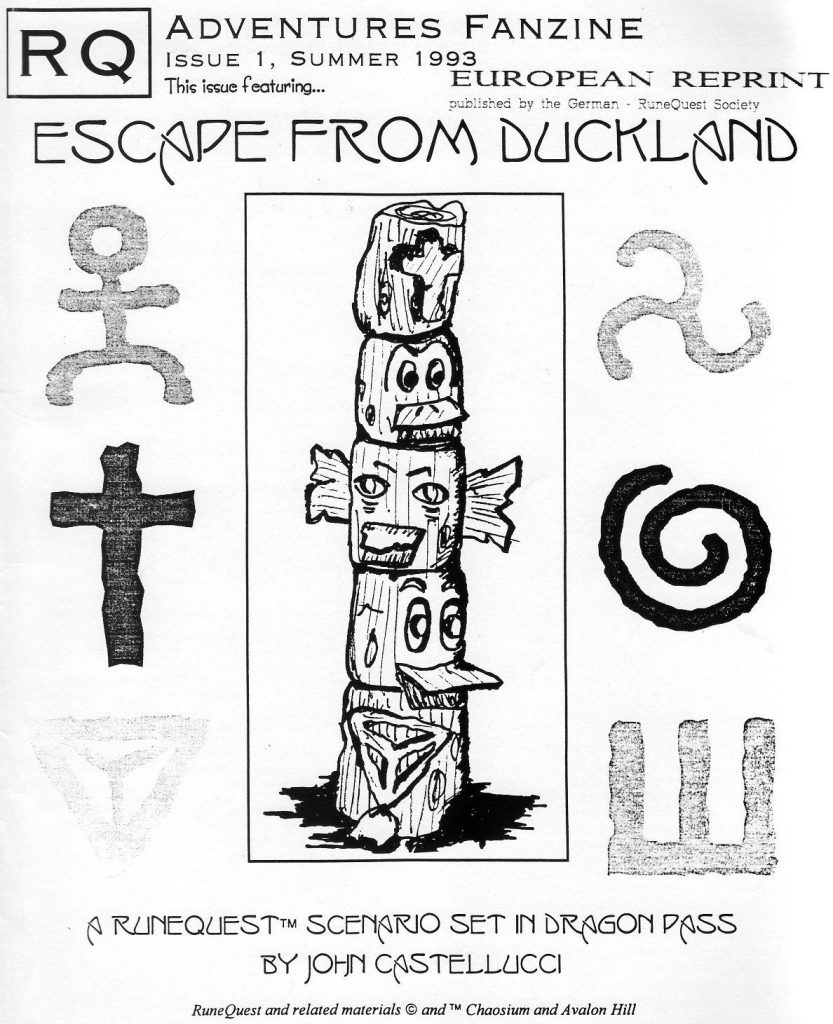
Pookie, from the unmissable Reviews From R’lyeh, takes a look at this old Runequest fanzine from the 1990s.
Really Dicey Reviews the Weapons & Equipment Guide
I haven’t seen it yet, and probably won’t watch it until I’m done writing my own, but here you go in case you’re still on the fence about the book!
This Week’s Miniatures
Let’s put all the nice miniatures photos in the same section… and what’s a better way to start off than with a preview of the upcoming MadKnight Castings Kickstarter?

According to Andrew Taylor this is Kargan Bar, Aranea Spider Master. The Kickstarter is scheduled for “early April”.
Peter James has a nice collection of Uz:
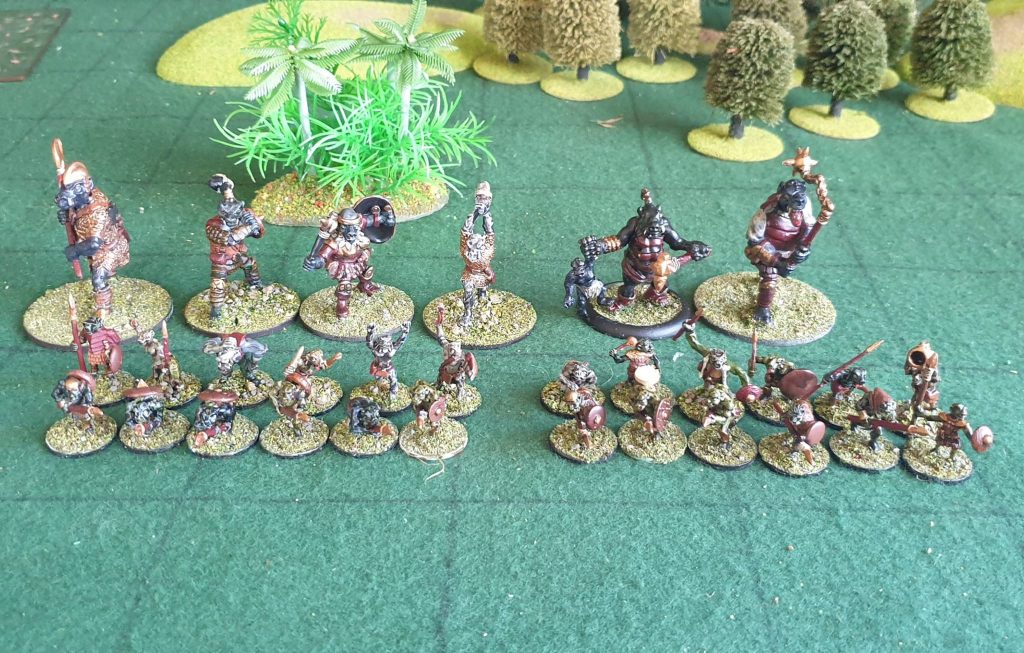
Felix Miniature Painting has, as always, some great photos. These are MadKnight Castings’ Sable Riders, Newtlings, Blessed Daughters, Dragonewts, and Danfive Xaron Penitents.
MadKnight Available From Rapier

Andrew Taylor alerted us that MadKnight miniatures are now available for purchase from Rapier Miniatures website! Check them out here. Note that Rapier has a few other 28mm Gloranthan miniatures, plus a line of 6mm Gloranthan miniatures, if you’re into large-scale wargaming.
Elsewhere on Arachne Solara’s Web
Not everything is about Glorantha, although most things are! Here are loosely relevant things that we found on the interwebs.
Geomorphological Landscapes
This Instagram account has quite a few “exceptional” geographical spots from around the Earth. When you’re trying to make a magical setting like Glorantha, it’s good to be reminded how weird and crazy the real-world can be, so you know you can go even wierder and crazier.
Here is Mount Maelifell in Iceland:

The Rock of Guatape in Columbia:
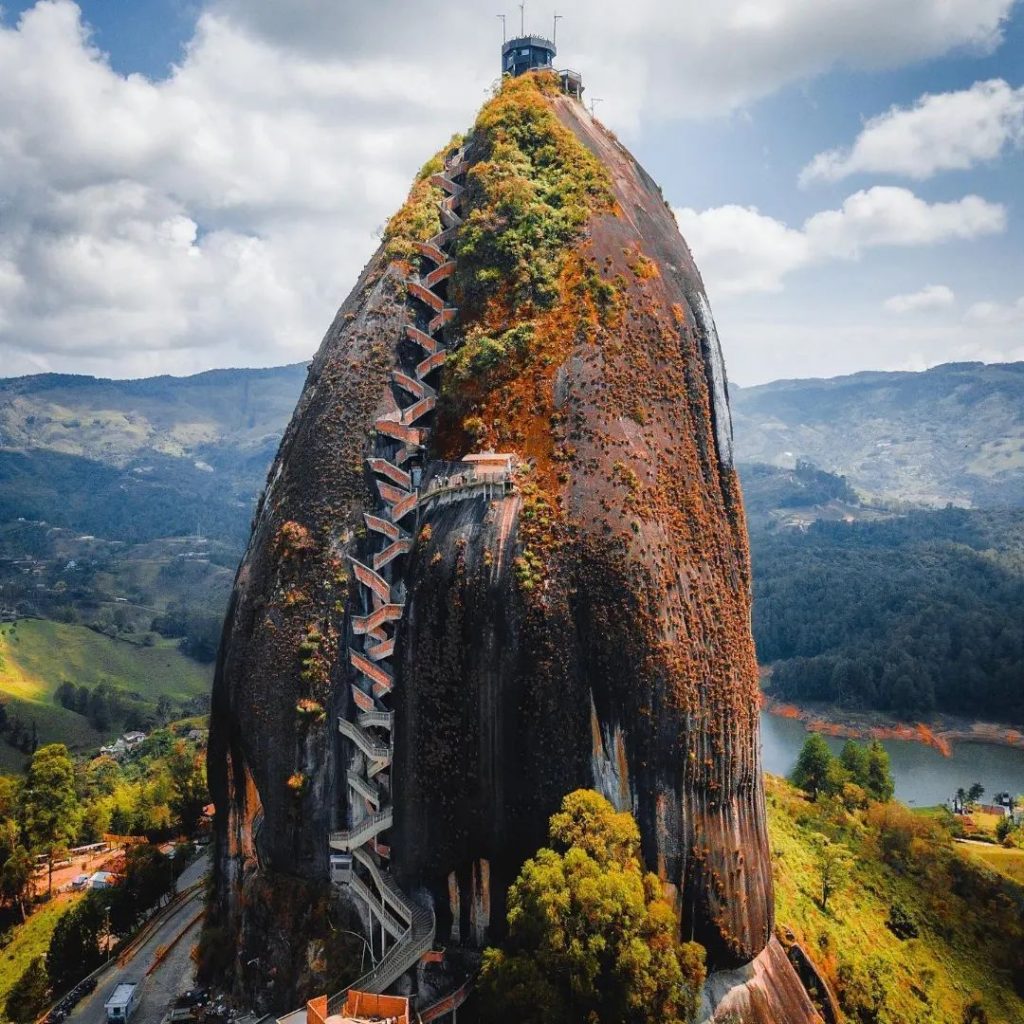
The badlands of Hingol National Park in Pakistan:

Here are some natural sand sculptures at Mono Lake in the USA:
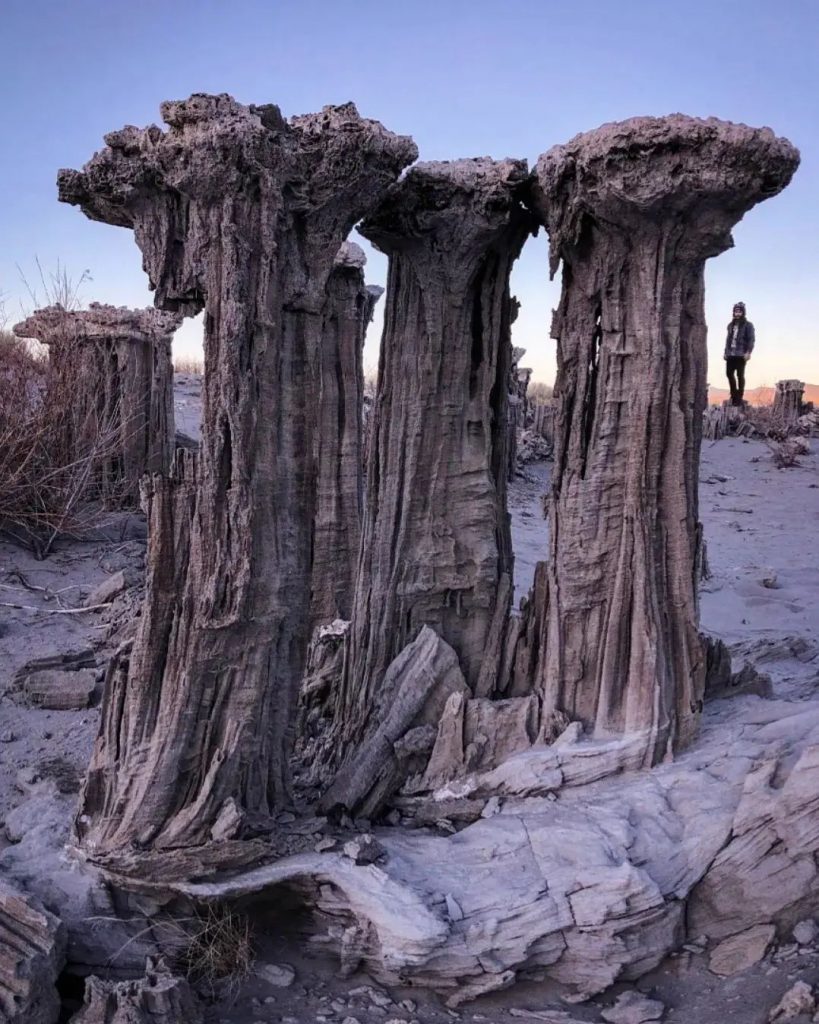
The Stanislav Grand Canyon in Ukraine looks like somebody put too many Rune Points into a Fissure spell:
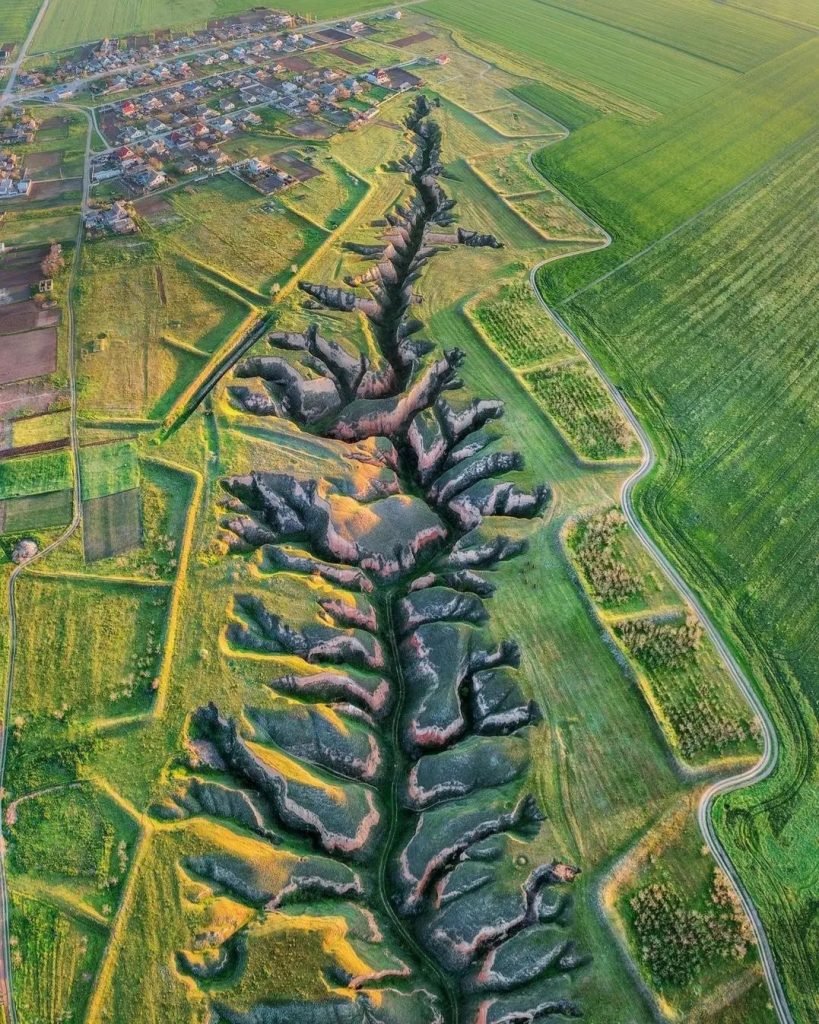
A lake in Japan that is most likely sacred to Uleria:
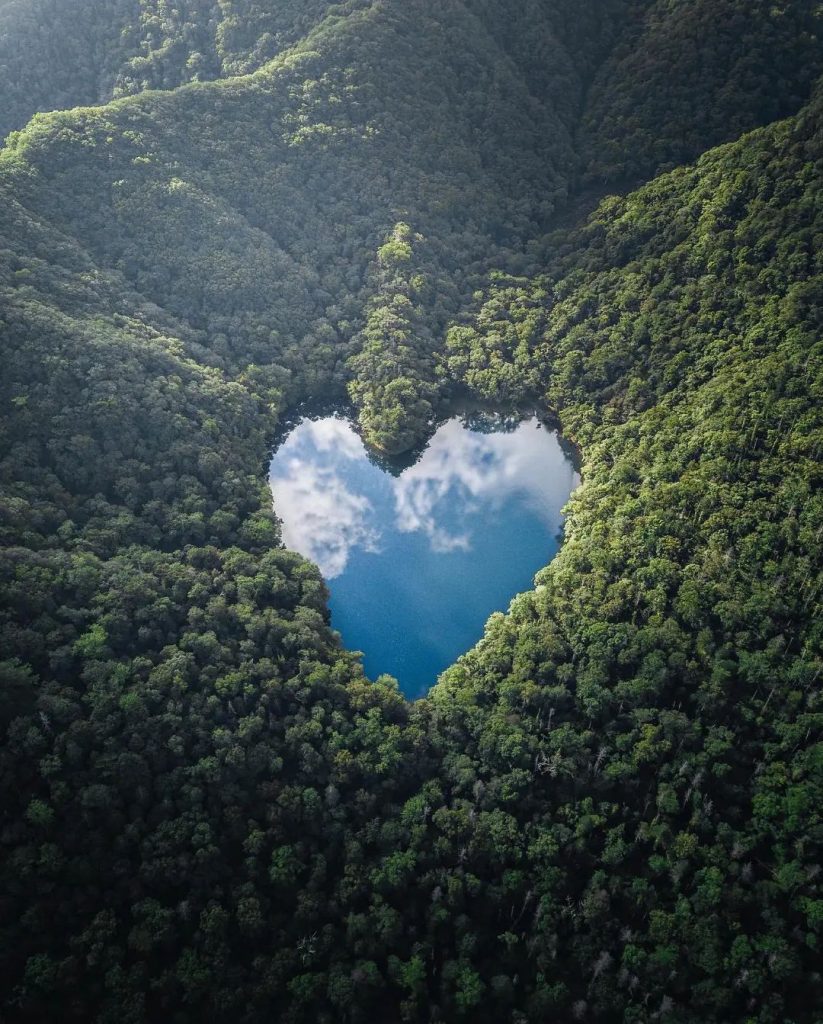
Here’s Hauser Spire in Switzerland… most probably where Earth Shield was used during the Gods War:
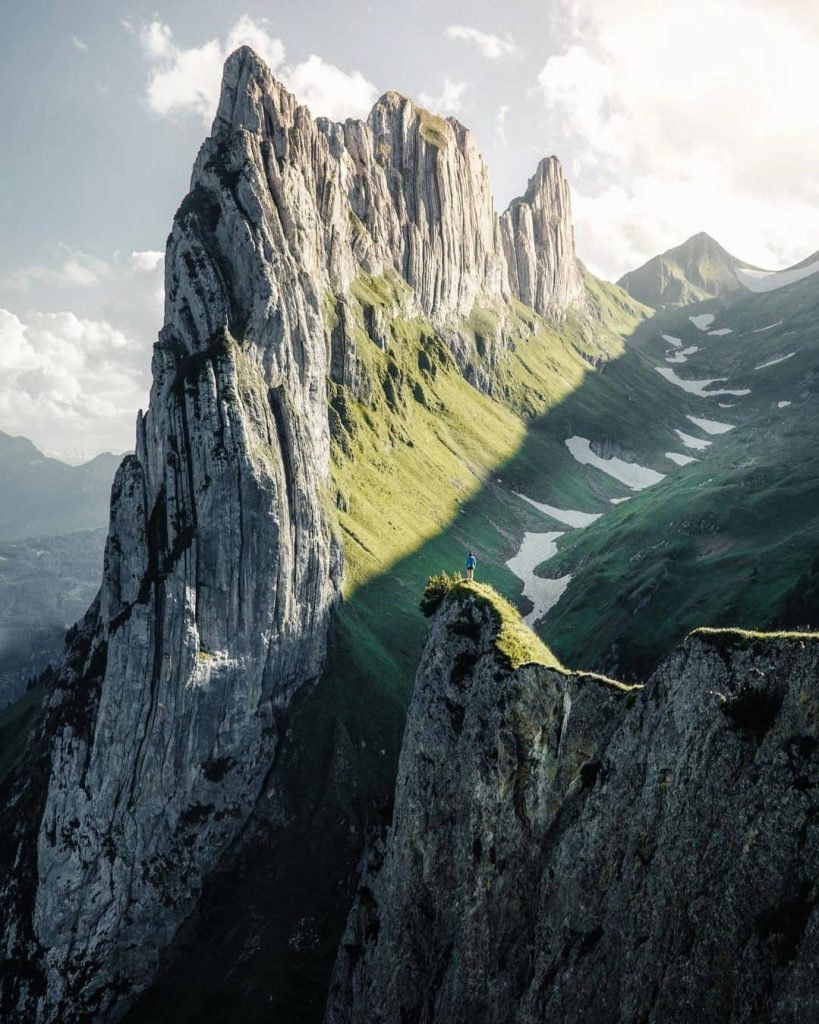
There is way too much to share here so check out the Geomorphological Landscapes profile here. They even have many videos of weird stuff, like, say, ice balls, a dragon’s eye, some cool sea caves, a surprise for your adventurers when they ford a river, or a crazy-ass mountain-top fort for the most devout Orlanth initiates.
Bronze Age Copper Mine of Great Orm
Guest entry by Jörg
This video describes the Bronze Age coppermine of Great Orm in northern Wales, and while Gloranthan mining mostly goes for nuggets and dust of native metal rather than ores that need smelting, the information on underground lighting and spelunking activity certainly is pertinent to any Gloranthan spelunking, and offers a rather primitive type of oil lamp to drop and spill. (Where the “dropped oil lamp table” is the RuneQuest equivalent to Hollywood igniting every car that rolls down a cliff… spilled fuel cools down quickly, and without the heat of the wick won’t keep the fire going.)
Thank you for reading
That’s it for this week! Please contact us with any feedback, question, or news item we’ve missed!



